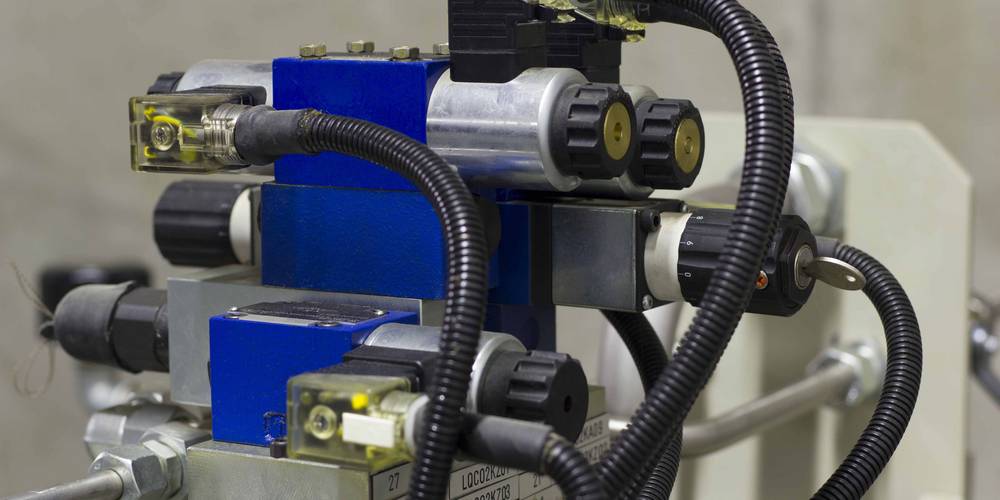If you compare our offers with those of our competitors, you will certainly notice one difference. We are one of the few lift table manufacturers who use under-oil units instead of the usual compact units. In this article, we’ll explain the advantages and disadvantages of the different designs so that you can decide on the right concept ...
What is the difference between the two power units?
Actually, the two designs differ only in one single point. The electric motor of the under-oil unit is integrated directly in the tank of the drive unit, whereas the electric motor of the compact unit is flanged on the outside. The actual function and the other components are mostly identical. This means that in both the under-oil unit and the compact unit, the electric motor drives a gear pump, which in turn provides the volume flow for the hydraulic cylinders. In addition, both designs have a valve block that holds the lift table in position by means of a check valve, and allows the lift table to be lowered by means of a lowering valve (see Hydraulic diagram of a simple lift table).
Disadvantages of the under-oil unit
As the electric motor sits in the hydraulic oil, the waste heat from the motor is transferred directly to the oil. An excessively long duty cycle can cause the oil temperature to increase to unacceptably high levels. If the hydraulic oil exceeds the limit of about 80 °C, there is a risk that the gear pump will be damaged.
Outside dimensions
The integration of the electric motor in the hydraulic tank means that the outside dimensions of under-oil units are smaller than that of compact units. This is particularly relevant when only a small footprint is available for the lift table . While compact power units are often installed externally, under-oil units can be installed inside the scissor lift table despite the limited space available.
Noise emission
According to the data sheets of comparable power units, there are no difference in the sound pressure level. Both types of power units have a sound pressure level of approximately 70-75 db(A). However, the hydraulic oil in the tank is perfectly suited to filter the high frequencies of the electric motor. This produces a more pleasant noise level in under-oil units, as the high-pitched “whine" of the electric motors is not audible. This is particularly advantageous when the scissor lift is used as an assembly lift, i.e. when an employee is working in the direct vicinity.
What do we use?
Almost all our lift tables are equipped with under-oil units, as the disadvantage mentioned is not relevant for most applications . If you take a look at how a loading lift table or even a goods lift is usually operated, for example, you will quickly find that the maximum duty cycle of 15% is not reached. The hydraulic power unit is only needed for the lifting process. The hydraulic power unit is switched off during loading and unloading or even during the lowering process. This always gives the hydraulic oil enough time to cool down again or the duty cycle is not even sufficient to heat up the hydraulic oil unduly.
Although we would always like to take advantage of the benefits of under-oil units, there is one area of application where we also use compact units. In this case, we refer to plant lift tables. Plant lift tables are subjected to a very high stroke frequency and very long operating times . It is not uncommon for a plant lift table to perform 60 strokes per hour in three-shift operation. At these rates, it quickly becomes clear why an under-oil unit would be unsuitable in this case. For these lifting tables, we therefore not only rely on greasable bearings, hardened non-locating bearing rollers and replaceable rails, but also on a compact power unit with a duty cycle of 100%.
What do you need to do?
As always, the question arises: What do I need to do to acquire the right lift table? And, as always, our standard answer: Provide us with as much information as possible about the application area of the lift table, discuss the load cases, lifting cycles and the actual place of use with us and we will make sure you get the right lift table.



Comments (0)
No comments found!